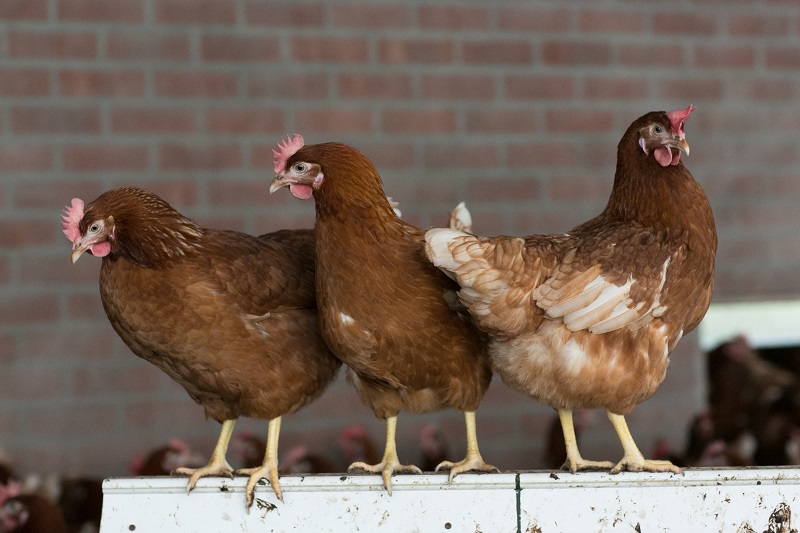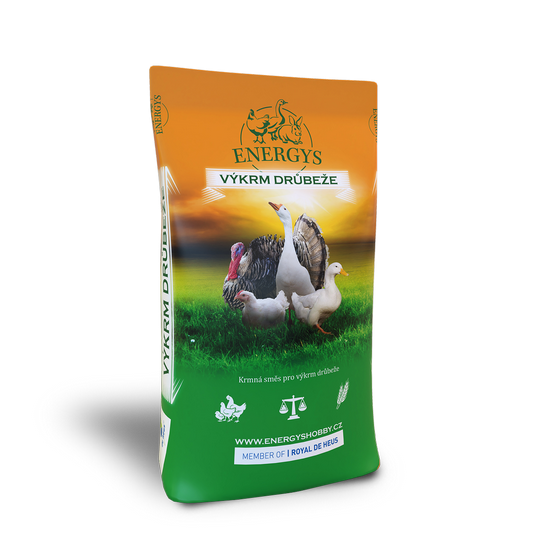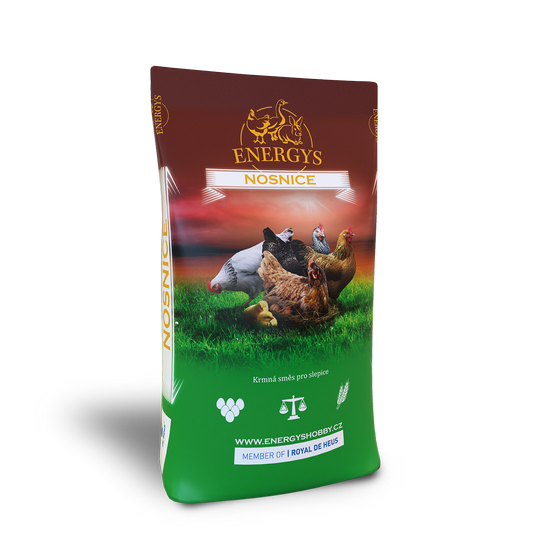Breeds of hens
Chickens are the most numerous bird species ever, with 26 billion breeding representatives. Unsurprisingly, they are divided into several groups according to different aspects. Which division is the most common, and which breeds of hens should you definitely be familiar with?
Division of hen breeds
The categories into which hens can be classified are based on various parameters. The basic ones are weight, origin or performance.
According to weight, hens are simply divided into light, medium or heavy; according to origin, for example, they are divided into european and asian. However, hens are most often divided according to performance/appearance. In this division we find laying hens, meat hens, hens with combined performance, ornamental hens, fighting hens or dwarf hens.
Light, heavy and medium hens
Light breeds of hens
Lightweight hens are lighter in weight and excel in egg laying. They can be recognised by their tendency to scratch the ground a little more than their heavier counterparts. These tolerant birds include one of the world’s most bred chicken breeds, the leghorn, which can lay 200 eggs a year.
Heavy breeds of hens
Heavy hens, on the other hand, are the right ones if you want to raise them for meat – they have a lot of it. On the other hand, they have a lower laying rate. This includes, for example, cats, which are characterised by their robustness and calm temperament, but also top the popularity charts. Other representatives, the brahmins, are again popular all over the world because of their attractive appearance.
A compromise between light and heavy, the hens are medium-heavy. They give you both enough meat and enough eggs. In this group we include, for example, the calm plummets and the hempsters.

By performance and appearance
Carrier breeds of hens
If you desire a large number of home produced eggs, be sure to choose one of the laying hens for your breeding. You will not be surprised to find mainly light and medium hens in this category. These are, for example, the aforementioned leghorns. This also includes hybrid hens, which are bred to lay as many eggs as possible while using as little feed as possible. There are a number of these and they will lay up to 300 eggs a year.
Meat breeds of hens
Meat hens are characterised by rapid weight gain. Heavy hens fall into this category, so for example the aforementioned brahman hens. However, nothing is free, so they need a good quality feed with plenty of protein to achieve the desired plumpness. Another meat breed is the faveroles, which will win you over with their character, appearance and performance.
Breeds with combined performance
This popular category includes hens that have good laying performance and also good quality meat. They are typically less flighty and have a quieter nature. This includes, for example, the sasex, which you will like because of their calm nature, or the plummock. These are highly conformable and make excellent layers.
Fighting breeds of hens
You will not be surprised to learn that fighting breeds were put into cockfights. These are the oldest breeds of hens, which moved to shows after fighting was banned. You can recognize them by their muscular body or wide stance. But their weakness is laying. These include, for example, malaikas and asilkas.
Ornamental breeds of hens
Don’t look for material gain – they are mainly bred for their appearance and their character traits. Among the cute hens are the silkies, which will win you over with their beautiful fur. In addition, they excel in their ability to raise their own and other chicks. Other representatives are the sultanas, which are characterized by their stilts, beard and five fingers. They are not suitable for beginners as they require a lot of care. We can also include phoenixes, pigeons and dutchies.
Dwarf and diminutive breeds of hens
The diminutive breeds were bred classically from the large breed and bear the same characteristics as the large breeds to which they belong.
The dwarf breeds form a separate group with many common characteristics. They weigh around half a kilo and are bred mainly for ornamental or show purposes. They lay around 80 eggs a year. Classic dwarf breeds include japanese, mosettes, sebrites and bantams.

Související články
31. března 2025
Zveřejnil: Tým Energys Hobby
Pokud se slepice chovají pro produkci vajec, pak je přirozeným cílem chovatele jich mít od jedné nosnice co nejvíce při co nejnižších nákladech. Za tím účelem se v komerčních chovech využívají výhradně speciálně vyšlechtěné hybridní kombinace nosného typu slepic, kterých se dosáhne křížením různých genetických linií čistokrevných plemen. Tito hybridi si tak z každé linie…
22. května 2024
Zveřejnil: Tým Energys Hobby
Kur domácí, respektive slepice patří k nejdůležitějším hospodářsky využívaným zvířatům, která dávají užitek v podobě vajec a masa. V současné době je kladen stále větší důraz na životní podmínky zvířat, tzv. welfare. To má za důsledek, že se farmáři již začínají připravovat na povinné změny v ustájení nosnic. V následujícím článku je jednoduché shrnutí používaných…
19. února 2024
Zveřejnil: Tým Energys Hobby
V posledních letech se zvyšuje obliba chovu nosnic v domácích podmínkách. Tento trend může být ovlivněn několika faktory. Jedním z nich je jistě vyhledávání kvalitních potravin, snaha o udržitelnější životní styl a touha lidí po větší nezávislosti. Chov nosnic v domácím prostředí taktéž umožňuje majitelům mít kontrolu nad podmínkami chovu zvířat a kvalitou výživy, kterou…
26. října 2022
Zveřejnil: Tým Energys Hobby
Slepice jsou nejpočetnějším ptačím druhem vůbec, a to s 26 miliardami chovaných zástupců. Nebude tedy překvapením, že se dělí hned do několika skupin podle různých hledisek. Jaké dělení je to nejčastější, a která plemena slepic byste určitě měli znát?
3. října 2022
Zveřejnil: Tým Energys Hobby
Při chovu slepic možná leckoho napadne, jak dlouho vlastně taková slepice žije. Na tuto otázku není jednoznačná odpověď. Vždy záleží na několika faktorech – některé ovlivnit můžete, některé bohužel ne. Jak můžete přispět k dlouhému životu svých slípek a jak takový život opeřence probíhá?
Související produkty

DRŮBEŽ UNI 30
Sypký koncentrát pro výkrm všech kategorií drůbeže, který obsahuje sóju nejvyšší kvality. Míchá se s obilím v poměru 20 – 40 % (dle druhu nebo fáze výkrmu). Přispívá k rychlému růstu a vysoké zmasilosti. Neobsahuje kokcidiostatikum. Lze použít také pro krmení slepic.

NOSNICE REPRO
Granulované krmivo pro plemenné nosnice. Podporuje vyšší líhnivost a zdárný vývoj embrya. Lze použít i pro ostatní kategorie drůbeže. Doporučuje se zkrmovat 1 – 2 měsíce před očekávanou snáškou.

NOSNICE GOLD
Granulované krmivo pro nosnice ve snášce. Podpora vysoké snášky vajec s pevnou skořápkou a krásnou barvou žloutku. Navazuje po zkrmování směsi Kuře MIDI. Orientační spotřeba krmiva na 1 rok se pohybuje od 50 – 60 kg/kus.

NOSNICE KLASIK
Sypká krmná směs určená pro nosnice ve snášce. Svoji hrubě šrotovanou strukturou přispívá k maximální užitkovosti.

KUŘE MIDI
Od 5. týdne do konce 20. týdne stáří kuřic. Navazuje na zkrmování směsi Kuře MINI. Svým složením napomáhá ke správnému rozvoji organismu a k budoucí vysoké užitkovosti. Neobsahuje kokcidiostatikum. Vyrábí se ve dvojí formě, granulované a sypké.

KUŘE MINI
Drcená krmná směs bez kokcidiostatik. Vhodná pro odchov kuřic nosného typu do konce 4. týdne věku. Obsahuje vyvážený poměr živin podporující správný vývoj kuřat. Pro odchov kuřat je následující směsí KUŘE MIDI.

